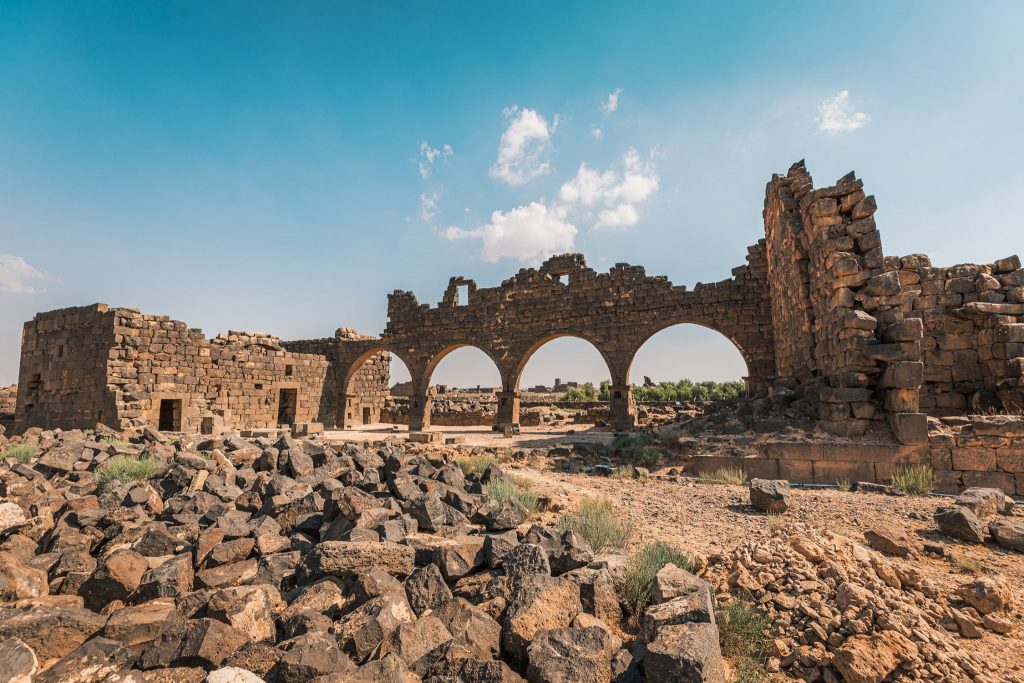
Umm al-Jimal
Referred to as the Black Gem of the Desert, there is very little historical information about Umm Al Jimal. Umm Al Jimal is believed to have originated in the first century AD. An earthquake in the 8th Century destroyed many buildings and forced the civilians to flee the town. Some of the town including the barracks was built by the Romans and the adjoining chapel was built during the Byzantine era.
After the 106 AD Roman annexation of the Nabataean kingdom, Umm al-Jimal was enlarged, becoming an important military base, with encircling walls, a new reservoir, and a hydraulic system to supply this and its other cisterns and reservoirs. A vast (now ruinous) fort was also constructed, to be replaced by a considerably smaller barracks in the early 5th century, when the military role of the city had declined.
In the Byzantine era, more houses were built, 14 churches and a cathedral; and growth continued under the Umayyad, still with its Christian community. But after the 749 earthquake and the Abbasid removal to Baghdad, it was never rebuilt. It remained abandoned until the early 20th century when some Druze from nearby Jabal al-Arab took up brief residence here. The modern village near the ruins dates from 1950.
